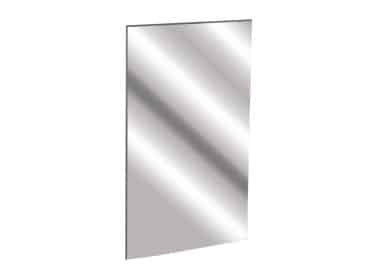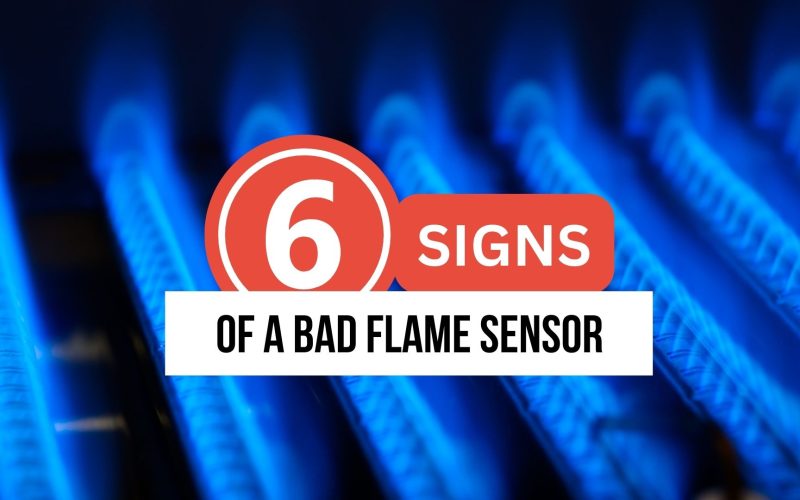When your furnace suddenly stops working, it can leave you in the cold wondering what went wrong.
Often, the culprit is a small but crucial component: the flame sensor.
This safety device can shut down your entire heating system if it’s not working properly.
I’ll help you understand everything you need to know about furnace flame sensors, including how to spot problems and what to do about them.
With this knowledge, you’ll be better equipped to keep your home warm and your furnace running smoothly.
In this post, we’ll cover what a flame sensor does, signs it might be failing, how to locate it in your furnace, and steps for cleaning or replacing it.
I’ll also share some tips on when it’s best to call in a professional for help.
Identifying a Bad Flame Sensor
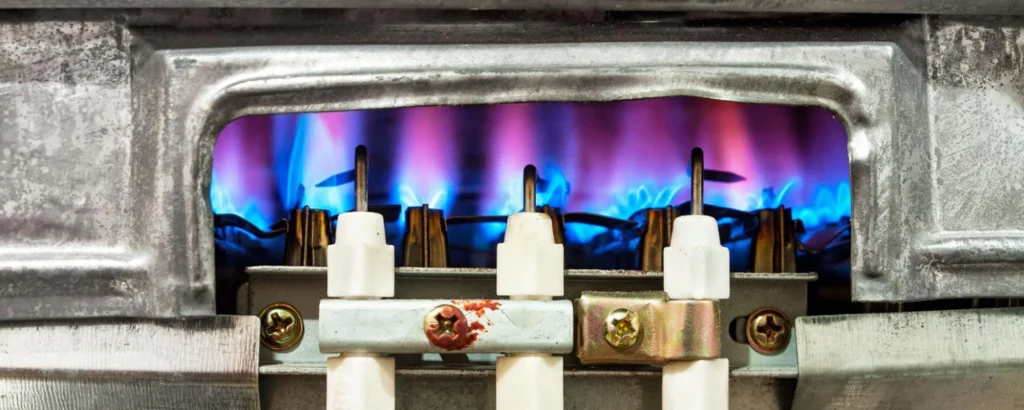
A faulty flame sensor could be the culprit when your furnace starts acting up.
This small but crucial component plays a big role in your heating system’s operation.
Spotting the signs of a bad flame sensor early can save you from chilly discomfort and potentially costly repairs.
Before we discuss the specifics of flame sensors, it’s important to know what to look for.
From strange noises to unusual flame colors, there are several telltale signs that your flame sensor might need attention.
By learning to recognize these symptoms, you’ll be better equipped to maintain your furnace and keep your home warm and safe throughout the cold season.
What is a Flame Sensor?
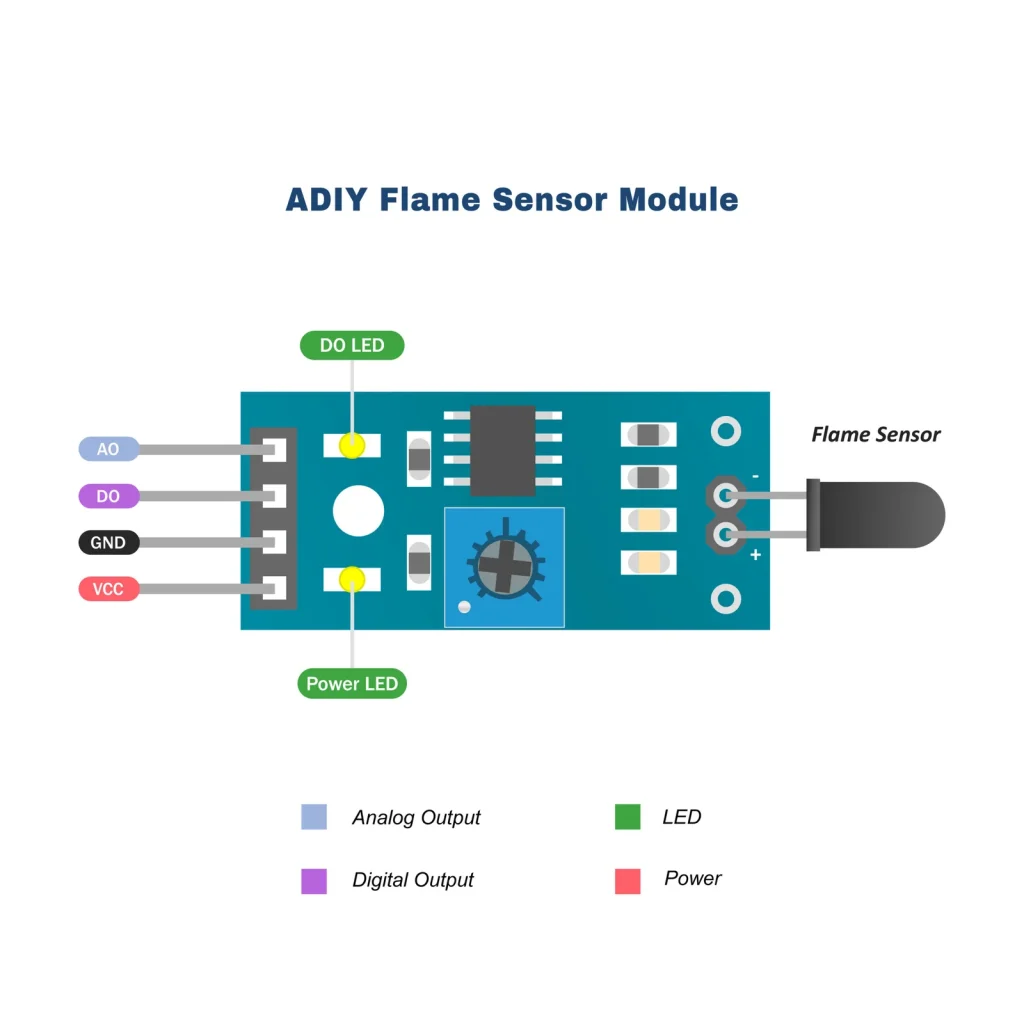
A flame sensor is a key safety part in gas furnaces.
It’s a thin metal rod that checks if the burners are lit when the gas valve opens.
If it doesn’t sense a flame, it shuts off the gas to prevent leaks or explosions.
The sensor’s main job is to keep your home safe.
It stops unburned gas from getting out, possibly leading to fires or carbon monoxide buildup.
This small part plays a big role in your furnace working safely and well.
Flame sensors work differently from thermocouples.
Furnaces with pilot lights use thermocouples, while those with electronic ignitions use flame sensors.
Both help keep your heating system safe but in slightly different ways.
Why Is the Flame Sensor so Important?
First, it’s all about safety.
Making sure gas only flows when there’s a flame stops gas leaks and lowers the risk of explosions or carbon monoxide problems, which are serious dangers associated with gas furnaces.
The sensor also helps your furnace run better.
It ensures the furnace burns fuel the right way, saving energy.
It also prevents the furnace from turning on and off too often, which can wear it out faster.
Keeping your flame sensor in good shape is key to your furnace working well.
When it’s working, you won’t need as many repairs, and your heating will be more steady.
It’s a small part that greatly affects how safe and efficient your furnace is.
Symptoms of a Bad Flame Sensor
Your furnace’s flame sensor is a key safety component.
When it’s not working right, it can cause various issues.
Here are six signs to watch for
1. Furnace Continuously Turns On and Off (Short Cycling)
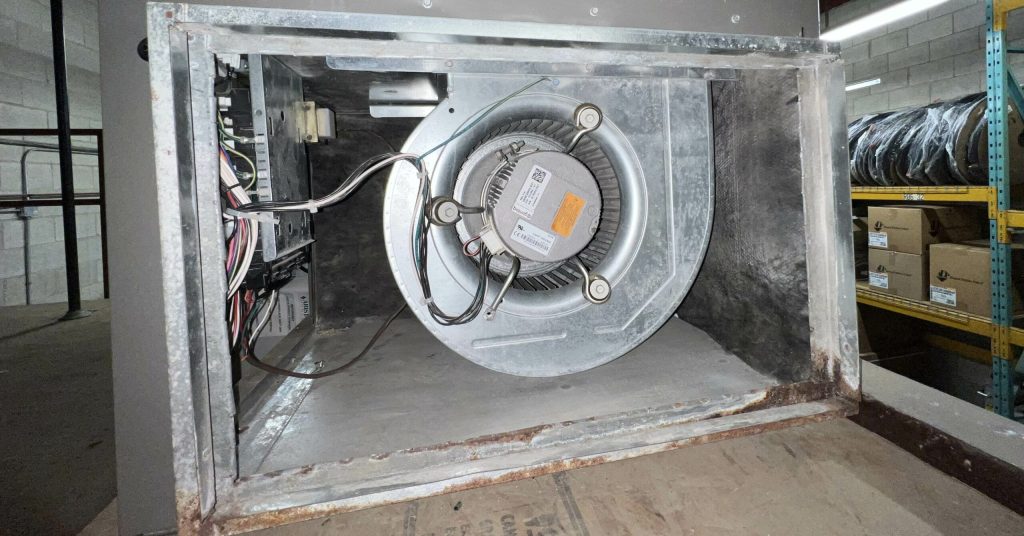
- Description: Your furnace starts up, runs briefly, and then shuts off, repeating this cycle frequently.
- Cause: The flame sensor is dirty or faulty, failing to detect the flame consistently.
- Value: Recognizing this symptom early can prevent damage to your furnace and maintain its efficiency.
2. Clicking Sounds
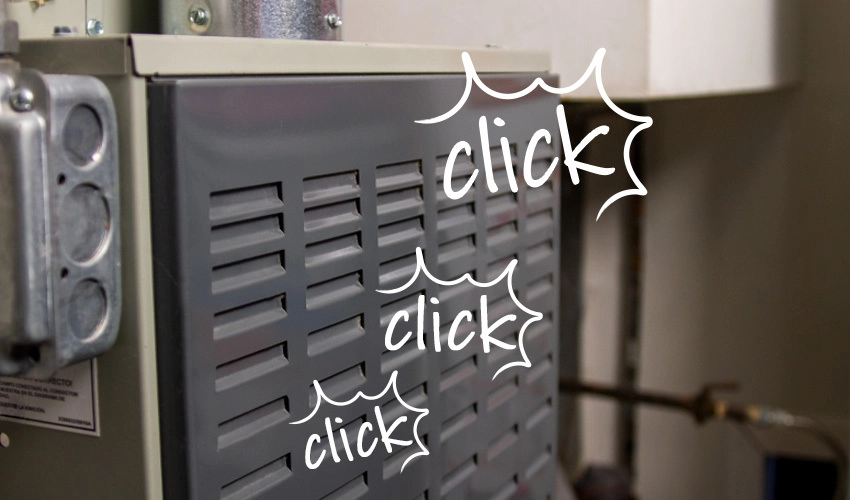
- Description: You hear unusual clicking noises coming from your furnace.
- Cause: The flame sensor is struggling to detect the flame, causing repeated ignition attempts.
- Value: Identifying this sound promptly can help you address issues before they escalate.
3. Yellow Flames
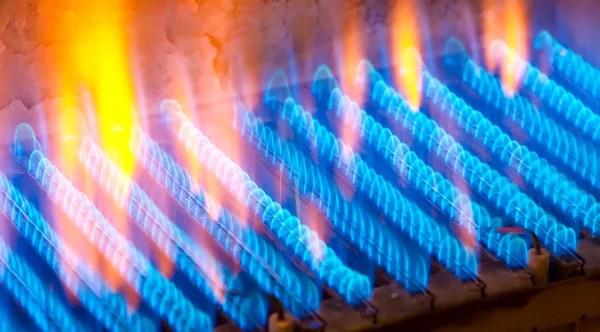
- Description: The burner flames appear yellow instead of blue.
- Cause: A malfunctioning sensor is leading to improper gas combustion.
- Value: Spotting yellow flames is crucial as they indicate dangerous carbon monoxide levels.
4. High Energy Bills

- Description: You notice unexpected increases in your heating costs.
- Cause: The furnace operates inefficiently due to sensor issues, using more energy than necessary.
- Value: Catching this symptom can save money and signal underlying problems needing attention.
5. Dirty or Corroded Sensor Tip
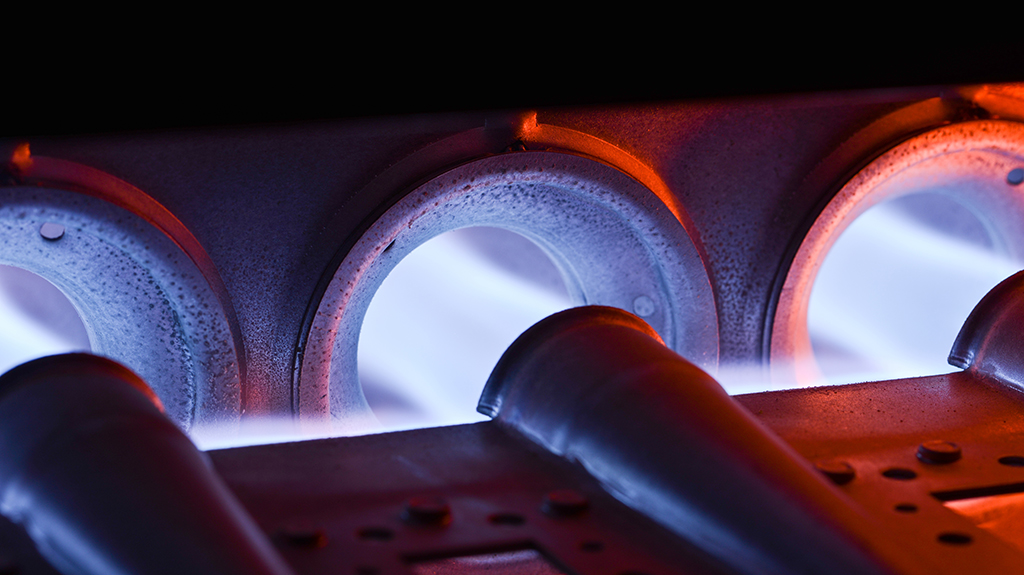
- Description: The tip of the flame sensor appears black, dirty, or corroded.
- Cause: The build-up of soot or residue interferes with the sensor’s function.
- Value: Regular checks and cleaning can prevent this common issue, ensuring consistent furnace performance.
6. Cracked Porcelain Casing
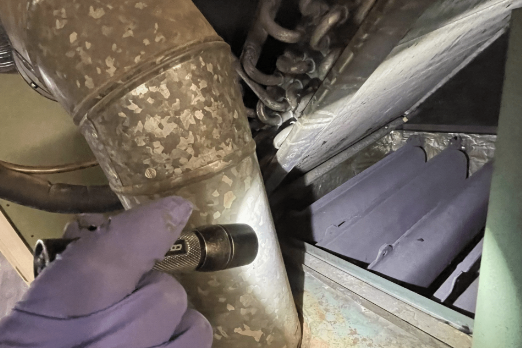
- Description: You see visible damage or cracks on the sensor’s porcelain casing.
- Cause: Physical wear and tear has impacted the sensor’s integrity.
- Value: Addressing this damage early can prevent complete sensor failure and more extensive repairs.
If you notice any of these symptoms, it’s best to consult with an HVAC professional.
They can properly diagnose and fix the issue, keeping your furnace running safely and efficiently.
Causes of a Bad Flame Sensor
Ensuring your furnace works well is key for a safe and cozy home.
When the flame sensor acts up, it can cause many problems.
Let’s look at why this happens and how to stop it.
We’ll focus on three main reasons: dirt buildup, normal wear, and physical damage.
1. Dirt and Soot Build-up
- Description: Over time, dirt and soot collect on the flame sensor.
- Cause: As the furnace burns fuel, it leaves tiny bits that stick to the sensor.
- Value: Knowing this helps you see why regular cleaning is so important.
When dirt covers the sensor, it can’t tell if the flame is on.
This might make your furnace turn on and off a lot.
The fix is simple: clean the sensor now and then.
For example, one homeowner found their furnace kept shutting off after just a few minutes.
A quick sensor cleaning got things back to normal.
2. Wear and Tear
- Description: The sensor parts naturally break down over time.
- Cause: Being near heat and flame always weakens the sensor bit by bit.
- Value: Understanding this helps you plan for regular checkups and replacements.
As the sensor ages, it might not work as well, and you may have trouble seeing the flame.
The best way to handle this is to have someone check your furnace regularly.
They can spot a worn-out sensor before it causes problems.
For instance, an old furnace might start acting up, and a checkup shows it’s time for a new sensor.
3. Physical Damage
- Description: The sensor gets cracked or broken.
- Cause: This can happen if someone isn’t careful during repairs or if something hits the sensor.
- Value: Knowing this reminds you to be careful around your furnace and get help from pros for repairs.
A damaged sensor can’t do its job right.
If you see cracks or other damage, it must be replaced immediately.
During one furnace check, a technician found a crack in the sensor’s cover.
Installing a new sensor fixed the problem.
To wrap up, dirt, wear and tear, and damage are the big three causes of flame sensor trouble.
Regular cleaning and checkups can stop most of these issues.
If you spot any of these problems, it’s best to fix them quickly.
This keeps your furnace running safely and saves you money in the long run.
Cleaning and Maintaining the Flame Sensor
Keeping your furnace’s flame sensor clean and well-maintained is key to its performance.
Let’s go through the cleaning steps and care for this important part.
This will help your furnace work safely and save you money on energy bills.
Step 1: Shut Off the Power
- Description: Turn off the electricity to your furnace before you start.
- Cause: Working on live electrical parts can be dangerous.
- Value: This step keeps you safe while you work on the furnace.
Step 2: Locate the Flame Sensor
- Description: Find the flame sensor inside your furnace.
- Cause: You need to know where it is to clean it.
- Value: Knowing its location helps you work efficiently and avoid damaging other parts.
Step 3: Remove the Sensor
- Description: Take the flame sensor out of the furnace.
- Cause: You can’t clean it properly while still in place.
- Value: Removing it lets you clean all sides and check for damage.
Step 4: Clean the Sensor
- Description: Gently scrub the sensor to remove dirt and soot.
- Cause: Built-up grime stops the sensor from working right.
- Value: A clean sensor detects flames better, helping your furnace run smoothly.
Step 5: Reinstall the Sensor
- Description: Put the clean sensor back in the furnace.
- Cause: The sensor needs to be in the right spot to work.
- Value: Correct installation ensures the sensor can do its job properly.
Step 6: Test the Sensor
- Description: Turn on the furnace and watch it work.
- Cause: You need to make sure the sensor is working after cleaning.
- Value: Testing catches any problems early, keeping your furnace running safely.
Following these steps can keep your flame sensor in good shape.
This helps your furnace work better and last longer.
If you’re uncomfortable doing this, asking a professional for help is okay.
Regular care like this can prevent big problems and keep your home warm and safe.
When to Replace the Flame Sensor
Every homeowner should keep their furnace running safely and well.
Let’s discuss when you should get a new flame sensor.
Knowing this helps your furnace work its best and keeps your home warm and safe.
1. Frequent Malfunctions
- Description: Your furnace keeps having problems even after you’ve cleaned the sensor.
- Cause: The sensor might be worn out and can’t do its job anymore.
- Value: Knowing when to replace the sensor can prevent your furnace from breaking down when needed.
If your furnace turns on and off quickly or shuts down a lot, even after you’ve cleaned the sensor, it might be time for a new one.
Replacing it can fix these ongoing issues and keep your furnace working right.
2. Physical Damage
- Description: You can see cracks, breaks, or bends on the sensor.
- Cause: The sensor might have been hit or damaged during use or maintenance.
- Value: Spotting damage early prevents unsafe conditions and keeps your furnace running smoothly.
Take a close look at your flame sensor.
If you see any cracks in its cover or the metal rod bent, it’s time for a new one.
A damaged sensor can be dangerous, so it’s best to replace it immediately.
3. Age of the Sensor
- Description: The sensor is old and nearing the end of its useful life.
- Cause: Like all parts, flame sensors wear out over time.
- Value: Replacing an old sensor before it fails can save you from unexpected furnace breakdowns.
Most flame sensors last about five years.
If yours is approaching this age or you can’t remember when it was last replaced, it might be time for a new one.
Changing it on schedule helps prevent surprise breakdowns.
Watch out for these three signs: frequent problems, visible damage, and old age.
If you notice any of these, it’s probably time to replace your flame sensor.
This keeps your furnace working well and your home safe.
If you’re unsure, asking a furnace expert for advice is always a good idea.
Taking care of your flame sensor helps your whole furnace work better and last longer.
Conclusion
Flame sensors are vital for your furnace’s safety and efficiency.
We’ve covered the signs of a bad sensor, like short cycling and yellow flames, which help you spot issues early.
We explored common causes, including dirt buildup and wear and tear, and shared steps for cleaning and maintaining your sensor.
Remember, regular care prevents many problems and keeps your furnace running smoothly.
When frequent issues arise, you see damage, or the sensor is old, it’s time for a replacement.
Taking care of your flame sensor is crucial for furnace maintenance.
It ensures a safe, warm home and can save you money on energy and repairs.
If you’re ever unsure, don’t hesitate to call a professional.
They can help keep your heating system in top shape, ensuring comfort and safety for your family.
Stay warm and safe!




